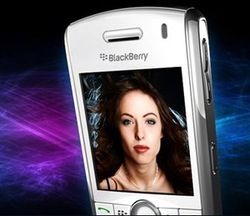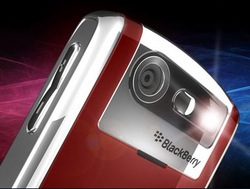 I’ve noticed this for a while, written about it, talked about it, and yet many handset manufacturers seem to be ignoring the obvious: Consumers want “smart”phones.
I’ve noticed this for a while, written about it, talked about it, and yet many handset manufacturers seem to be ignoring the obvious: Consumers want “smart”phones.
Case in point: Yesterday I spent time at a satellite R&D office of one of the largest handset manufactures in the world. A few of us were getting on an elevator as our escort talked about one of the company’s Windows Mobile smartphones.
“It’s for the business user,” he said.
“Maybe,” I answered, “but haven’t you noticed the number of average people out there carrying (RIM) BlackBerries, (Samsung) Blackjacks, and (Motorola) Q’s? These aren’t business people. They’re soccer moms and young adults.
“They’re not using smartphones to get their email from a corporate Exchange server. They’re not conducting traditional business. They’re conducting life’s business.”
In one ear, out the other.
And yet the latest numbers from Research in Motion, the ones behind the BlackBerry, bear me out and substantiate the trend.
RIM reports strong quarterly earnings that topped Wall Street projections. Revenue doubled from a year ago, up to $1.7 billion. Net income of $371 million (or 65 cents a share) rose from $175 million (31 cents a share).
The reason for the big boost? About 34 percent of BlackBerry subscribers in the quarter were consumers and small businesses, RIM co-CEO Jim Baisille said. On the Friday following Thanksgiving, RIM signed up a record number of new subscribers, he said, mostly consumers. (USA Today)
“Consumers want smarter handheld devices,” tech analyst Tim Bajarin told USA Today. “RIM was smart enough to see this trend early.”
 Even before Apple’s iPhone was released. RIM began catering to consumers with the introduction of the BlackBerry Pearl, a sleek, friendly device that is competitively priced (about $150 with a typical service plan).
Even before Apple’s iPhone was released. RIM began catering to consumers with the introduction of the BlackBerry Pearl, a sleek, friendly device that is competitively priced (about $150 with a typical service plan).
The Pearl began to catch on in earnest after the arrival of the iPhone stirred up consumer interest in “smart”phones. Not everybody wants to or can jump wireless providers — the iPhone is an AT&T exclusive — while the Pearl is available on other carriers.
RIM is expected to follow the Pearl with other consumer-friendly devices in 2008, including touch screen devices like the iPhone.
With the success of the Pearl, RIM is no doubt the No. 1 smartphone manufacturer in the U.S. But the iPhone has made tremendous progress since being introduced in June, now accounting for 27 percent of all smartphones in the U.S., besting the entire Windows Mobile lineup and ones running Symbian, Linux, and Palm operating systems.
Not only that, but stories are beginning to appear that the iPhone is winning corporate fans despite its enterprise flaws. Once Apple figures out a simple way for the iPhone to interface with Exchange, things get even more interesting.
Analysts speak of a “coming war” between RIM and Apple. Blogger Henry Blodget at Silicon Alley Insider wrote, “The battle will be on two fronts — enterprise and consumer — and it’s happening now.”
Just look around.

Daniel,
Completely agree with your thoughts. Handset manufacturers fail to realize that business is part of the overall life. Yes I do want my phone to help me around my business. However at the same time I need it to help me with my personal tasks too.
The devices must be able to satisfy both needs. The lack of this understanding has driven many users in carrying 2 devices. I have met so many people who have a flip phone for personal use and a Treo for official use.
Daniel and Abhishek,
I’m agrred on your comments. Companies shouldn’t forget people having normal mobile needs. Why the all focus is on upper ended Email Client Supported Phones. Why not to provide “smart” phones to general people those don’t even care about Smartphones
Keberhasilan Pearl, RIM tidak diragukan lagi produsen smartphone No. 1 di A.S. Namun iPhone telah membuat kemajuan luar biasa sejak menjadi